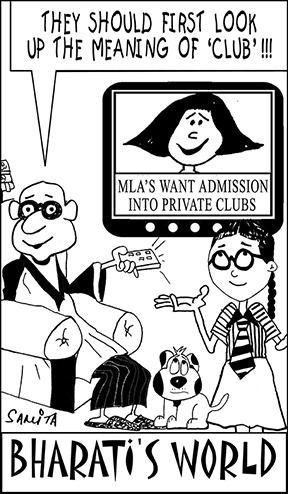 A populist decision taken by the state government of Uttar Pradesh to promote and assimilate primary school para-teachers (known as shiksha mitras) as assistant teachers into UP’s 1 million teacher force was struck down by the Allahabad high court on September 13. This judicial verdict has prompted widespread agitations in India’s most populous (200 million) state.
A populist decision taken by the state government of Uttar Pradesh to promote and assimilate primary school para-teachers (known as shiksha mitras) as assistant teachers into UP’s 1 million teacher force was struck down by the Allahabad high court on September 13. This judicial verdict has prompted widespread agitations in India’s most populous (200 million) state.
In 2012, the then newly-elected Samajwadi Party (SP), led by former teacher Mulayam Singh Yadav, mooted a proposal to absorb 176,000 shiksha mitras into the state’s teacher cadre. Two years later, true to its promise the SP government amended the teacher recruitment rules, exempting shiksha mitras from writing the Teacher Eligibility Test (TET), which is a mandatory pre-qualification for all government school teachers. It then passed a government order (GO) announcing the assimilation of 59,000 shiksha mitras as assistant teachers in June, 2014, followed by another 87,000 in June this year. But the state government’s proposal to transform another 91,104 para-teachers into assistant teachers was stayed on July 27 by the Supreme Court, which directed the high court to take a final decision on the matter.
Accordingly on September 13, the Allahabad high court quashed the government’s decision ruling that since shiksha mitras were not qualified teachers in the first place, they cannot be elevated to the position of assistant teachers. Unsurprisingly, para-teachers statewide responded by suspending teaching activities and organised a protest when prime minister Narendra Modi visited his parliamentary constituency Varanasi in mid-September.
Shiksha mitras have a chequered history countrywide. They are under-qualified (often class X school-leavers) teachers engaged on short-term renewable contracts to temporarily fill vacancies in government schools. Unlike government primary teachers whose pay scales are dictated by official pay commissions established by the Central government, para-teachers are poorly paid. Under the award of the Sixth Pay Commission (2008) primary teachers earn a minimum of Rs.26,000 per month at entry level. In sharp contrast, the monthly remuneration of shiksha mitras averages a mere Rs.2,400 per month in UP. Although para-teachers are usually — but not necessarily — under-qualified, cash-strapped state governments routinely employ them to step into the breach created by teacher vacancies. Currently in UP, there are 270,000 vacant teacher posts — a number far in excess of the 170,000 shiksha mitras employed in the state’s 221,653 government primaries.
The state’s first batch of shiksha mitras was appointed through a GO issued by the Mayawati-led Bahujan Samaj Party government in 1999 to catalyse admissions into government schools in rural areas and raise awareness about education. But their chances of promotion as fully-fledged teachers were blocked in 2010, when the National Council for Teacher Education (NCTE) mandated clearance of the Teacher Eligibility Test (TET) for appointment of teachers from primary level upwards. However, it gave an exemption of five years to those who were already teachers to clear the tough TET, which barely 1-2 percent of teachers countrywide pass annually. In 2011, the UP government got permission from the NCTE to provide shiksha mitras two-years BTC (basic teachers’ certification) training. Since then, several batches have been sent for training.
While the state government is set to appeal the high court’s decision, chief minister Akhilesh Yadav has asked shiksha mitras to continue teaching and has assured them of all benefits as assistant teachers until the court’s 90-day deadline for implementing its order expires. Anil Kumar Yadav, a leader of the Shiksha Mitra Morcha — the association spearheading the para-teachers’ protest — is hopeful of a solution. “In several states, including Uttarakhand and Maharashtra, shiksha mitras are promoted to teachers without clearing TET. Why should UP’s shiksha mitras be the exception? The high court’s decision will be set aside,” he says confidently.
Curiously, while the state government is very mindful of the grievances and sentiments of teachers and para-teachers, it seems to have no concern about UP’s 25.8 million primary school-going children being taught by unqualified teachers. Perhaps because children aren’t eligible to vote.
Puja Awasthi (Lucknow)